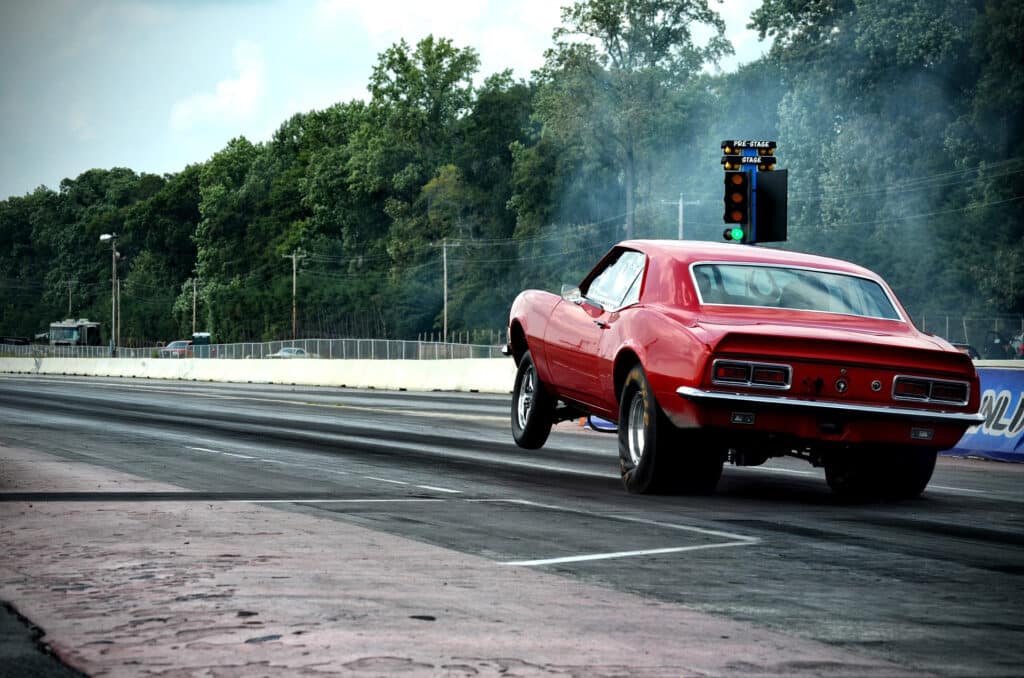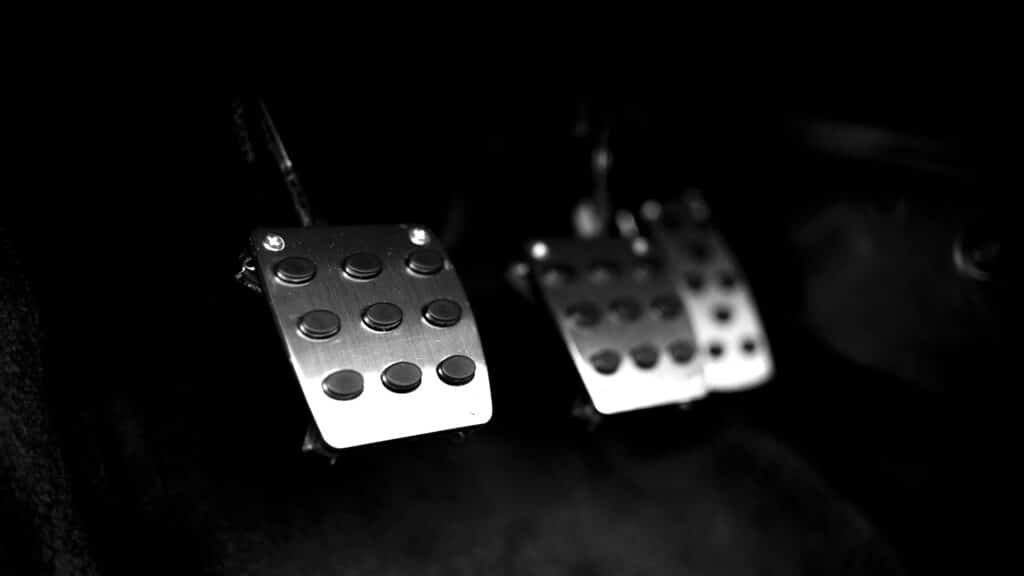Explaining no-lift shift or powershifting is actually really simple; keep the throttle buried while you shift from one gear to the next. Except, there’s a bit more to it these days.
Back in the golden era of muscle cars, they didn’t have the tuning capabilities we have today — there was no replacement for displacement.
To get a leg up on the competition, some drag racers would resort to powershifting.
The idea behind this technique is that it keeps the engine in the ideal rev range as you slam it into the next gear. In theory, doing this will ensure you don’t lose momentum between shifts.

In reality, all it does is give you a hundredth or two of an extra second down the quarter-mile, but in the process, it will most likely destroy your transmission synchro regardless of whether it uses helical or straight-cut gears.
Additionally, expect the clutch to succumb to an equal amount of abuse because it’s going to be doing a ton of heavy lifting. Even more so in the hands of inexperienced drivers with poor hand-foot coordination.
These days, however, there’s a new type of no-lift shift, and that’s what we’ll examine in this article.
How Does No-Lift Shift Work?
The old-school method of keeping your foot flat on the floor while changing gears was never as popular as you’d imagine.
Back then, people would often race their daily drivers and no one wanted to walk to work the next day after blowing up the transmission in a race.
Today, thanks to modern technology, there’s a safer way to powershift. Since pretty much every aspect of a modern engine is controlled via the ECU, software can now help protect your gearbox.

This software will “lift” for you by cutting the ignition when it detects that you’re pressing both the throttle and the clutch simultaneously.
By doing this, you can keep the pedal to the metal without worrying about blowing up the gearbox or burning up the clutch. If the latter happens, you’ll want a decent clutch alignment tool set to rebuild the part.
Essentially, the ECU is just doing the same as a human driver would do, but it’s capable of doing it much more quickly.
Yes, technically, it does lift, but it happens so fast that it’s actually possible to measure the improvement in acceleration, unlike the old-school no-lift technique.
Perhaps the biggest improvement can be seen in turbocharged cars, as the boost won’t drop between gearshifts and the turbine will stay relatively spooled up.
It didn’t take long before the aftermarket realized the benefits of modern-day powershifting, and even some car manufacturers jumped on the bandwagon.
Which Cars Come With a No-Lift Shift Feature?
Seeing as the original powershifters drove muscle cars, and it’s mostly a drag racing thing, it doesn’t come as a huge surprise that American car manufacturers included it in some of their models.

Perhaps most famous is the GM no-lift shift, as the company kind of “pioneered” it. Both the Chevy Cobalt SS and HHR SS came with the feature. Later it was possible to buy a no-lift shift Camaro, C7 Corvette, and Cadillac CT4-V Blackwing.
Of course, Ford refused to be outdone by their main rival, so they began to offer a factory no-lift shift Mustang through their Ford Performance Power Packages.
In addition, the Ford Focus RS used a variation where the driver could keep their foot flag while changing from first to second gear after a launch control-assisted start.
Many videos and articles claim Hyundai’s hot hatchback comes with a full-on no-lift shift as well, but that’s not entirely correct.

The Hyundai Veloster N’s system is similar to the one used on the Ford Focus, as it allows the driver to shift this way only when setting off using launch control.
A handful of modern performance-oriented cars come with some variation of this system as well, such as the late-model Porsche 991 and the 992 GT3, as well as the new Nissan Z.
If you own a manual transmission car that doesn’t have this feature, it may be possible to get a no-lift shift tune as long as it has electronic fuel injection — which is standard on most cars made after 1990.
How Can You Add No-Lift Shift to Your Car?
Many manufacturers offer aftermarket options that will work on practically any vehicle with an electronically controlled engine management system.
There’s the “no-lift shift box”, the WOT Box, made by N2MB, which needs to be wired into your car’s ignition system.
It’s straightforward to install, and once it’s done, you’ll have no-lift shifting and 2-step launch control — not the same as 3-step rev limiters.

If you own an MK6 Golf R, you might want to consider the APR system that allows you to maximize acceleration once the car gets moving at over 12 mph with the throttle pushed in by 98%.
Several tuners also offer this functionality via a tune, often in combination with a drag-style anti-lag tune to ensure your car flies off the line with full boost and power.
Is No-Lift Shift Bad?

While a modern no-lift shift system is nowhere near as bad for your transmission as the original method, you can potentially still damage the drivetrain if you use it too much, or by showing a total lack of mechanical sympathy.
Powershifting requires you to change gears as fast and smoothly as possible, and that’s easier said than done — especially the first few times.
It will take time to get used to shifting this way, perhaps even more so if you’re an experienced driver who’s spent a lifetime behind the wheel, as your brain will tell you to lift your right foot as you push the clutch in at high rpm.
However, the benefits are that you may potentially win more races, and even beat your personal record at your local drag strip.
Are you driving a car with this feature, or are you planning to buy one? Let us know in the comments below.

